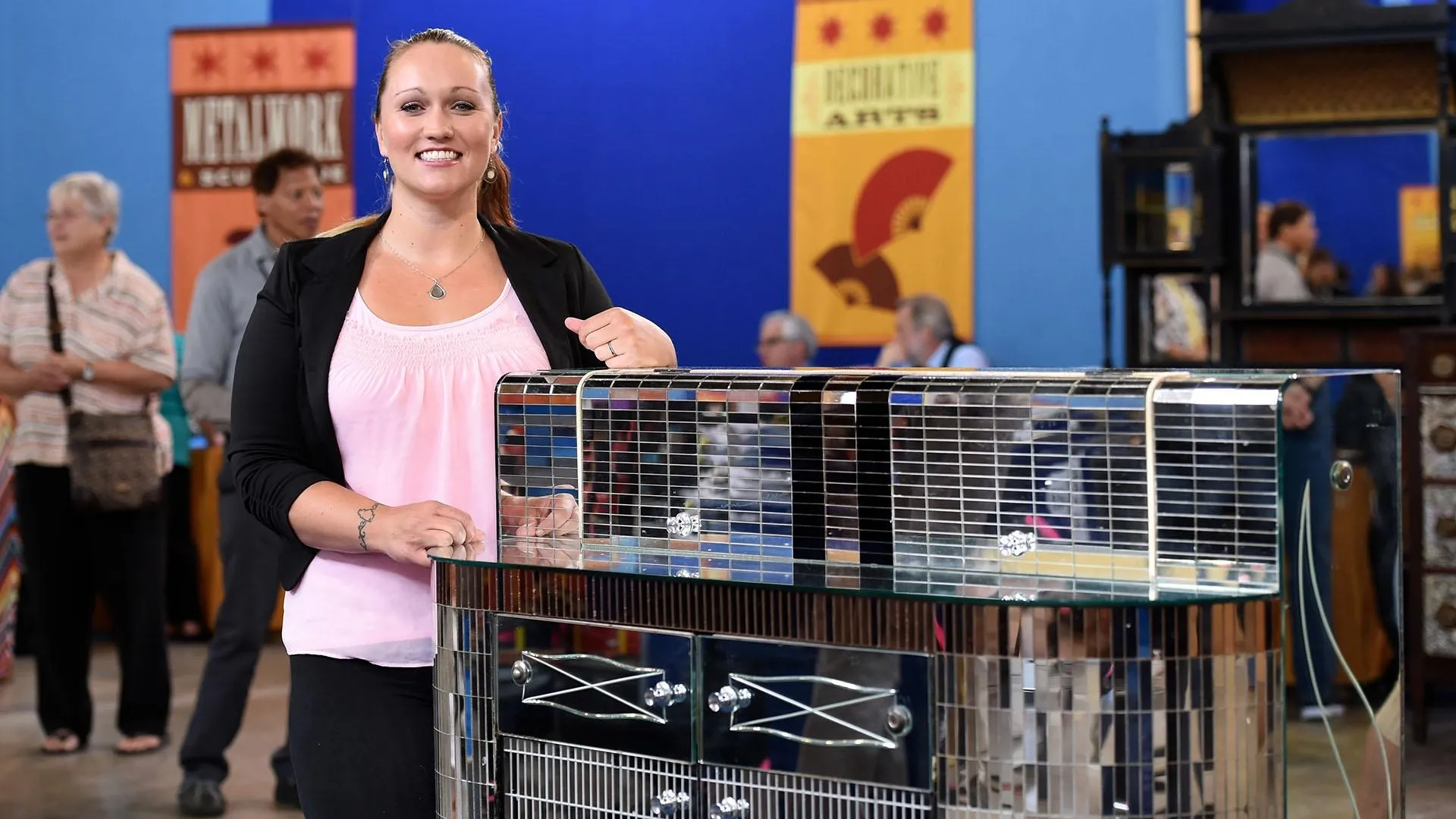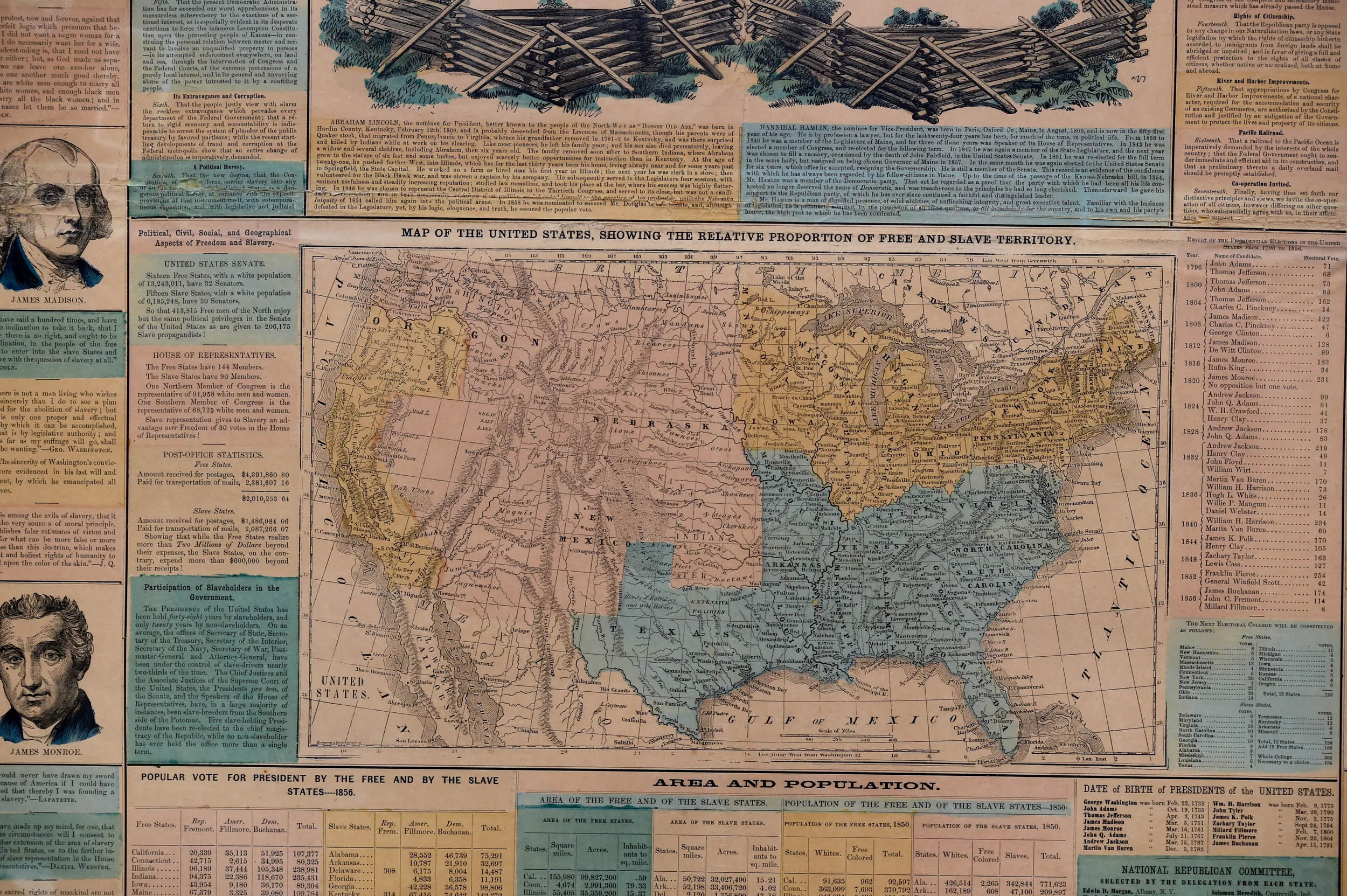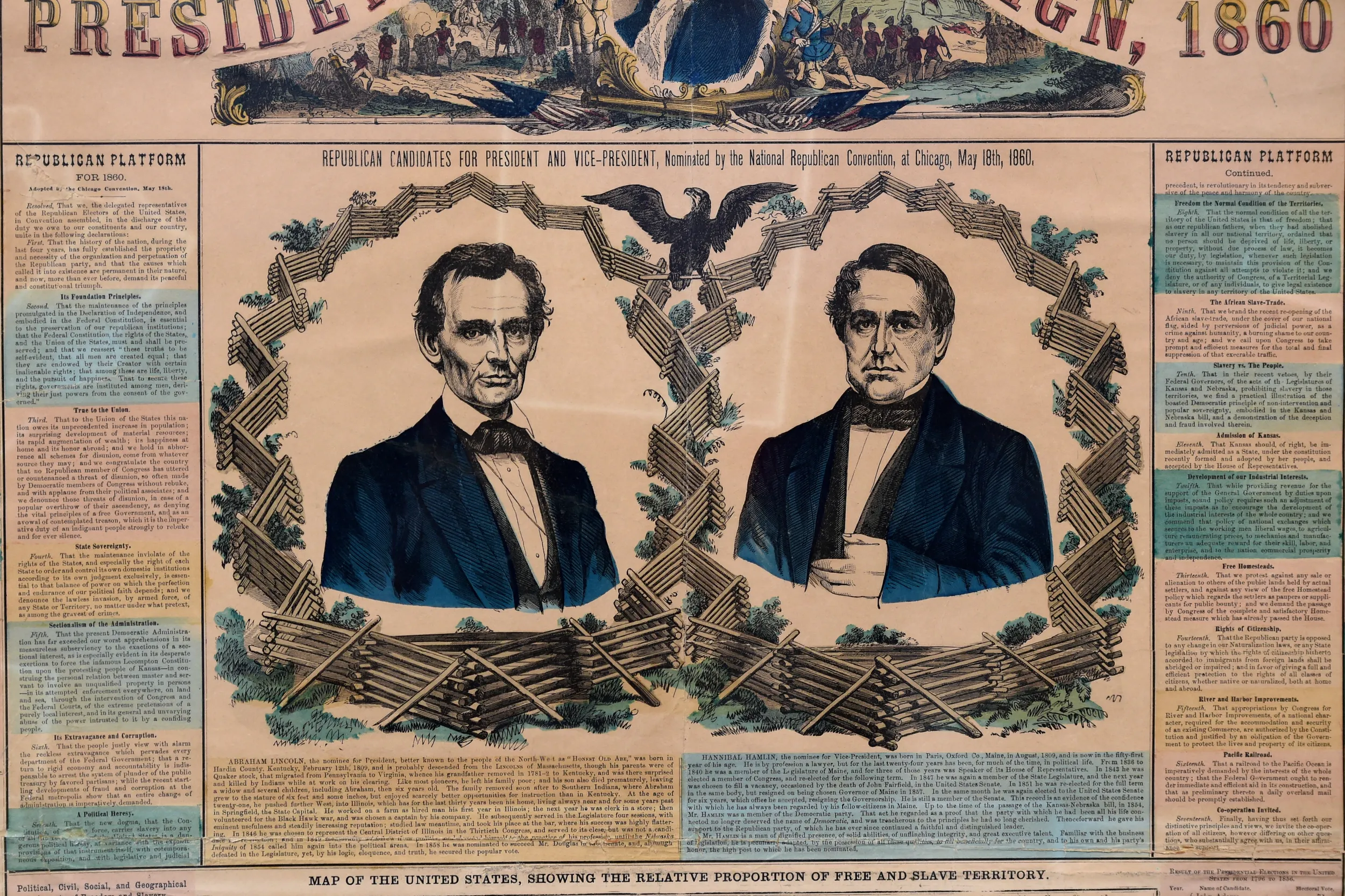GUEST: My husband and I found this in a little shop in Evanston, Illinois, in 1968.
APPRAISER: Do you remember what you paid for it?
GUEST: I would guess it was about $150 or $200, because that was a lot for us.
APPRAISER: This is the National Republican Chart for the presidential campaign, 1860. And Lincoln was nominated in May 1860, which you can see it says right up here, and this would have come out very shortly after that. It was actually issued during the campaign. Now, it's not a campaign poster. It was actually a commercial poster, and it was done by a publisher out of New York called H.H. Lloyd. He also did one for the Democrats, so he wasn't particularly politically inclined; he was commercially inclined. Now, one of the main issues of the Republican Party was to stop the spread of slavery to the American West, and that's what makes it particularly interesting historically. You see here, you've got the slave states, up here are the free states, and you've got Oregon and California. And it was this whole area that was the issue, because in 1820, with the Missouri Compromise, Congress agreed that-- this is the southern border of Missouri across here-- said no slavery could be in this area north of there. However, in 1854, when they created Nebraska and Kansas, they had a compromise, because the Southerners didn't want it to be kept out of there, and they said that those could come in as states by voting whether they were slave or not. So all the people against the spread of slavery were horrified, and that's what created the Republican Party. And this map was showing that graphically and saying to the people against the spread of slavery, "Look, if we don't elect Lincoln," this whole area in here could become slave." What makes prints valuable is they're connected to the time. Well, you can't get any more connected than a poster issued during the campaign. If I had to guess how many of these exist in reasonable shape in the world, you're probably looking at under 100. A couple have gone at auction since about 2000, but very rare, and those were not in as good shape as this. You've had it conserved, it's in very good shape. In a retail shop, I would expect this to have a value of about $14,000.
GUEST: I had no idea.
APPRAISER: Yeah.
GUEST: Oh, that's wonderful.
APPRAISER: A lot of money for, it's as good as you get with historic prints.
GUEST: Oh, that's so nice, thank you so much.
APPRAISER: And especially because you fixed it up and everything, so it's stable.
GUEST: It's a treasure.













